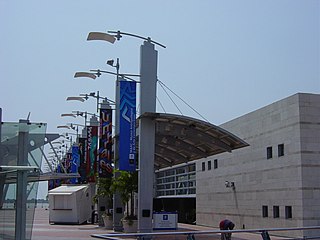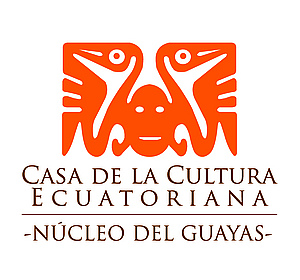 W
WMuseo Antropologico y de Arte Contemporaneo, or MAAC is a state-of-the-art museum in Guayaquil, Ecuador celebrating Ecuadorian, Latin American and Pre-Columbian art and culture. MAAC is a welcome addition to Malecón 2000, the renovated riverwalk in Guayaquil. Inaugurated on 30 July 2003, MAAC aims to constitute itself in a catalyst for the development of the local, regional and national artistic culture.
 W
WLa Casa de la Cultura Ecuatoriana is a cultural organization founded by Benjamín Carrión on August 9, 1944, during the presidency of Dr Jose Maria Velasco Ibarra. It was created to stimulate, to direct and to coordinate the development of an authentic national culture. Headquartered in Quito, it maintains several museums throughout Ecuador.
 W
WThe Ciudad Mitad del Mundo is a tract of land owned by the prefecture of the province of Pichincha, Ecuador. It is located at San Antonio parish of the canton of Quito, 26 km (16 mi) north of the center of Quito. The grounds contain the Monument to the Equator, which highlights the exact location of the Equator and commemorates the eighteenth century Franco-Spanish Geodesic Mission which fixed its approximate location; they also contain the Museo Etnográfico Mitad del Mundo, Ethnographic Museum Middle of the Earth, a museum about the indigenous people ethnography of Ecuador.
 W
WCochasquí is the "most extensive and most important complex" of pre-Columbian and pre-Inca Empire ruins in northern Ecuador. The site lies some 30 kilometres (19 mi) northeast of Quito in Pedro Moncayo Canton in Pichincha Province at 3,040 metres (9,970 ft) above sea level.
 W
WGuayaquil Municipal Museum is a museum in Guayaquil, Ecuador. It contains artifacts, objects and historical items relating to the history of Guayaquil. It is considered the most important of the city and one of the best in the country. It is located in the center of the city of Guayaquil, in the same building as the Municipal Library. Admission is free, but passports are required.
 W
WLuis Adolfo Noboa Naranjo Museum is a museum in Guayaquil, Ecuador. It was established on January 25, 2006 by Alvaro Noboa. It displays the private collection of paintings of the late Ecuadorian entrepreneur, Luis Noboa Naranjo, representing a sample of the most important contemporary Ecuadorian painters, with whom he had cultivated friendship. The museum consists of 10 halls with 97 pieces of art, with a particular focus on avante garde, including three murals of Manuel Rendon, and the paintings of Oswaldo Guayasamín, Eduardo Kingman, Humberto Moré, Carlos Catasse, Ricardo Montesinos, Segundo Espinel, Luis Miranda, Oswaldo Viteri and others. The museum offers guided programs for schools and colleges through city tours, permanent public displays, temporary exhibitions, and painting competitions.
 W
WMartínez-Holguín House is a historic house museum in Atocha parish, in the northern suburbs of Ambato, Ambato Canton, Tungurahua Province, Ecuador. It is situated in the Botanical Garden Atocha-La Liria, and dates to 1865, when it was built by Dr. Nicolás Martínez Vasconez. Since then, it has been the residence of several notable figures, including Luis A. Martínez, the author of the novel A la Costa and Minister of State and Education, who established the Colegio Normal de Agricultura in Ambato, and scientist Augusto Nicolás Martínez. It has since been converted into a wax museum.
 W
WThe Church of the Shrine — commonly referred to as the Old Cathedral of Cuenca — was the main place of Spanish worship during the time of Spanish colonization in Cuenca, Ecuador. It functions today as the Museum for Religious Art and is located at the Parque Calderon, opposite the New Cathedral.
 W
WSan Juan de Dios Hospital was a hospital located in Quito, Ecuador. It was the first hospital founded in the city and was open from 1565 to 1974. It has been designated a UNESCO Cultural World Heritage Site. Since 1998, the building which housed the hospital has served as the City Museum of Quito and maintains a small permanent collection relating to the history of the hospital.